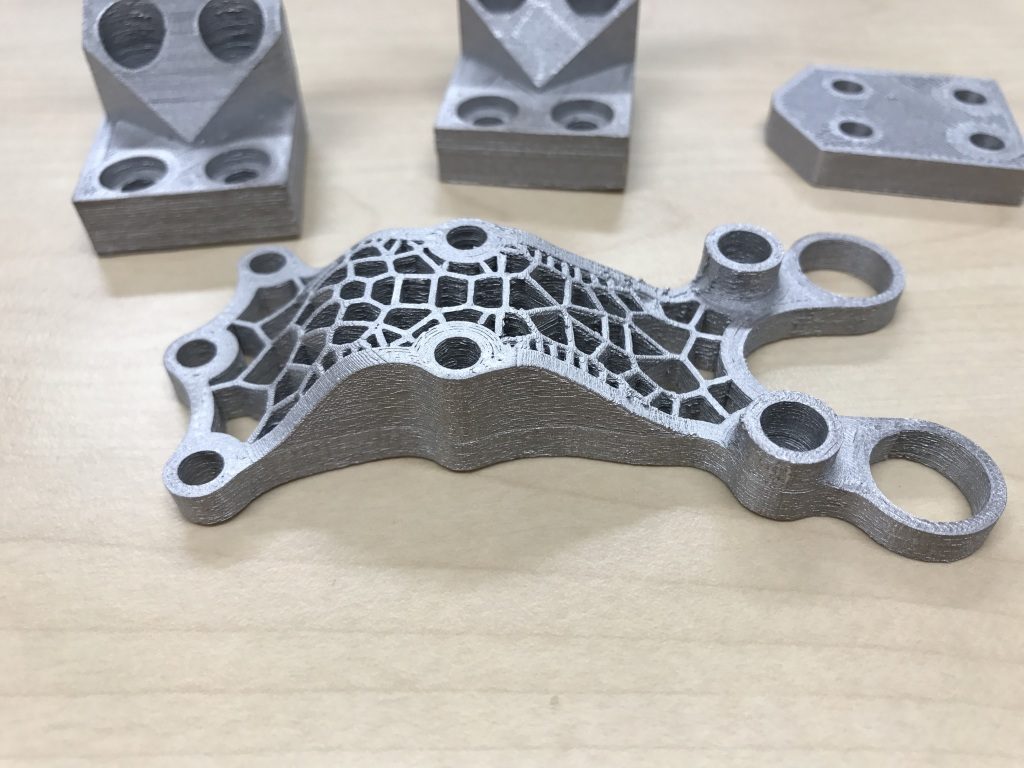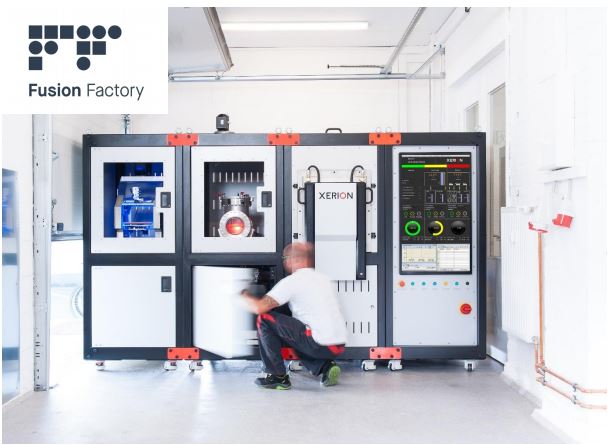In addition to production cost and time, another issue companies face is the possibility to manufacture without resorting to several machines. Xerion, a Berlin-based manufacturer of Additive manufacturing systems offers a solution that might address this issue.
Called Fusion Factory, the machine is a sort of duplex that provides a complete production line for metal AM in one machine. Through this machine, Xerion aims to meet the needs of the spare parts industry.
According to Siddharth Tiwari, Head of R&D at Xerion, “a number of European companies deliver their complex systems worldwide and failure of small mechanical parts (with complex geometry) can result in considerable downtime of the machine.”
What does Fusion Factory comprise?
Intriguing and yet innovative, the system seems to combine various types of manufacturing. Indeed, the manufacturing system can produce a part following three steps: Print it (Printing), Treat it (Debinding) and Compact it (Sintering).
Inspired by Metal Injection Molding (MIM), Fusion Factory therefore combines a 3D Filament Printer (FFF principle), a Debinding station (which functions on the principle of solvent removal) as well as a Sinter furnace.
When we asked Siddharth Tiwari why they built it based on the FFF technology, he replied that “the FFF principle is a relatively clean process and is free of any health hazards due to microscopic metallic powders required in methods like SLM. The metal powder is embedded as part of the filament with the help of a binder and there is almost negligible wastage of the raw materials.
Besides these filaments being much cheaper resulting in cheaper manufacturing costs per kilogram, one can also make use of multiple filaments simultaneously to produce hybrid parts. This could be metal with ceramics, metal with metal, and ceramics with ceramics.”

As far as technical details are concerned, it should be noted that an integrated system based on Siemens S7 (fail-safe) controls the duplex. Furthermore, with a maximum operational temperature of 1.550°C, the Sinter furnace enables the user to choose among different sinter atmospheres including 100% hydrogen.
According to Siddharth, “with the Fusion Factory the damaged parts can be produced at the shop floor itself within 2 normal working days and this even eliminates the costs related to warehouse storage of thousands of parts per machine.
However, during the due course of the development the obvious benefits of the system for prototyping and manufacturing of complex geometries have become evident and have resulted in our attempts to commercialize the technology for applications beyond spare parts manufacturing.”
For further information about 3D Printing, follow us on our social networks and subscribe to our newsletter
Would you like to subscribe to 3D Adept Mag? Would you like to be featured in the next issue of our digital magazine? Send us an email at contact@3dadept.com
//pagead2.googlesyndication.com/pagead/js/adsbygoogle.js
(adsbygoogle = window.adsbygoogle || []).push({});






